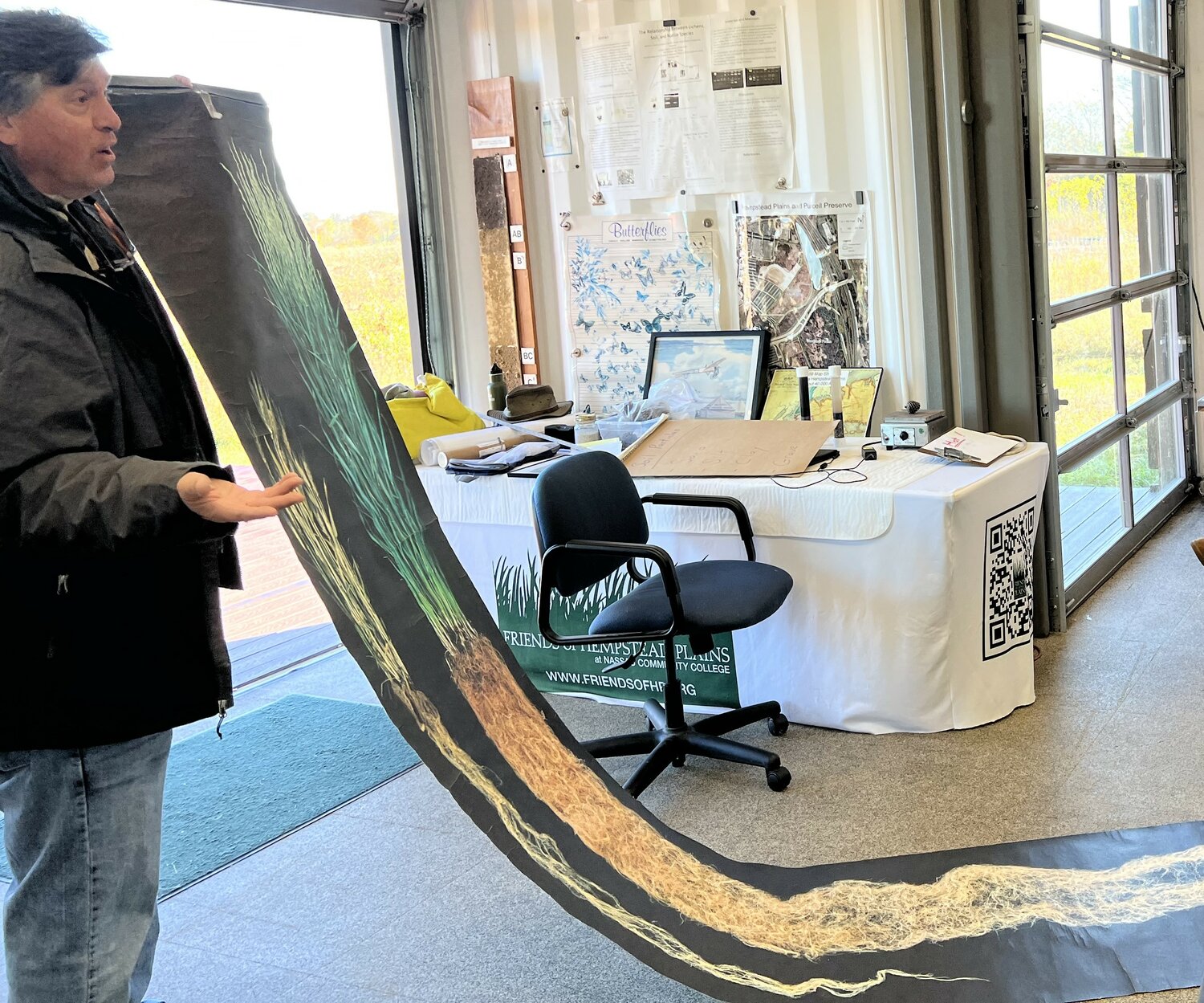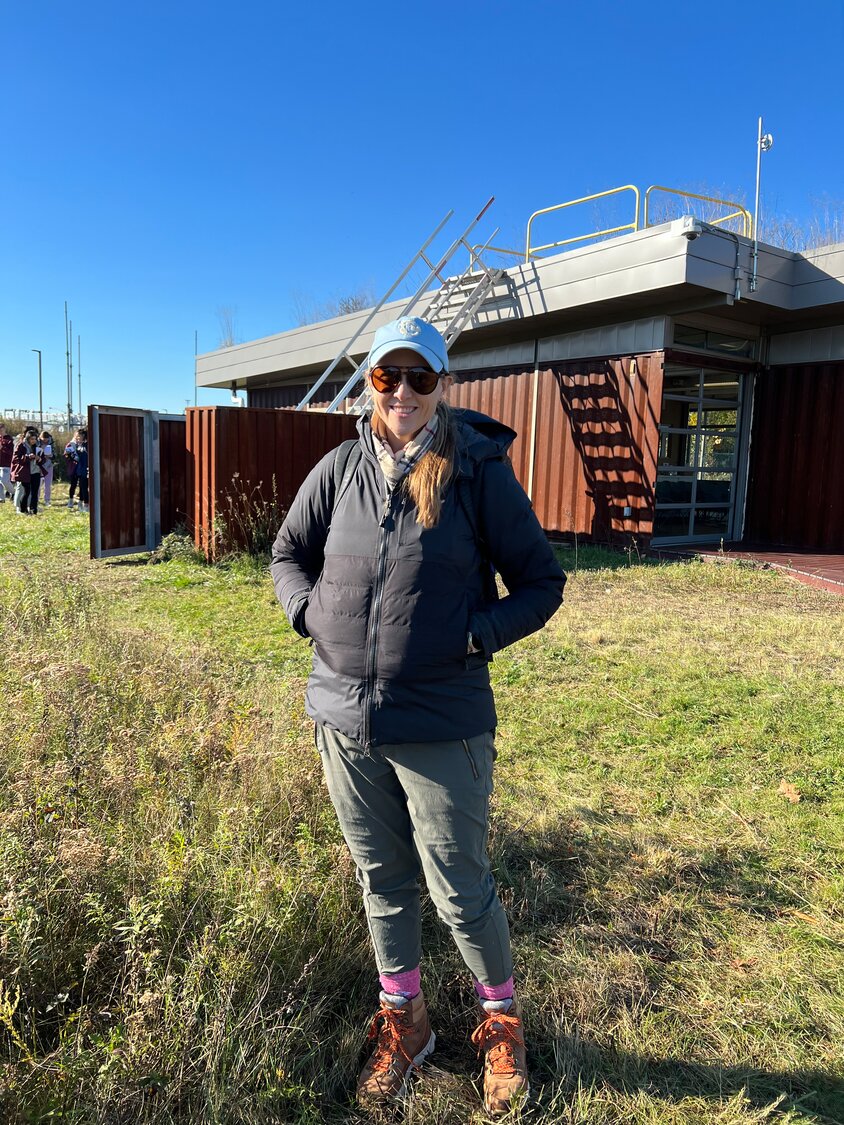A world of science and beauty five minutes away
Uniondale’s Hempstead Plains Preserve presents unique opportunity for local education
Long Island schoolteachers who drive past the broad, shaggy field at the southeastern edge of Nassau Community College might have no idea that it offers an outstanding education opportunity.
The Hempstead Plains Preserve in Uniondale, and its Education and Research Center, offer a hands-on opportunity to fulfill important aspects of the New York State Science Learning Standards.
The preserve is maintained by the Friends of Hempstead Plains. Its staff combines forces with area professors to conduct student tours and workshops, using a curriculum written to fulfill the state standards.
“The most effective way to teach science is to have students ‘do science,’” said Program Director Doug Schmid, an adjunct environmental science professor. “We get them to brainstorm and engage with the issue, use their prior knowledge to discuss possibilities, and then we conduct investigations that help them come to conclusions.”
“There’s a learning curve for the students to realize that this is a critically imperiled ecosystem,” said Steven Finkelstein, also an adjunct environmental science professor.
The original 40,000 acres of the Hempstead Plains formed the largest of the rare tallgrass prairies east of the Allegheny Mountains. European settlers during the 1600s established grand farms with livestock that thrived on the native vegetation.
Intensive human development followed.
“The fact that this land was flat, no boulders, no big logs,” said Finkelstein, “made it perfect for the first racetrack in all of North America. It led to Aqueduct, Belmont, the Triple Crown. It made aviation history. Charles Lindbergh flew from here, and in the 20th century, suburbia could build here, all because it’s flat.”
The development reduced the prairie to a few dozen acres, whose preservation is recognized for its importance to the scientific and historic disciplines.
On a sunny day recently, two AP Environmental Science classes arrived from Garden City High School. Finkelstein took one group to the roof, where they waded through tallgrass growing up there.
“What could possibly be good about a sod roof?” Finkelstein began. When a student answered, “Regulate temperature,” Finkelstein said, “Good thought. The sod actually acts like an insulator.”
He talked the students through the benefits of sod roofs, and then took them back down to the field, where they spent time clipping and bagging invasive species like mugwort and Chinese bush clover.
“That’s our big problem here,” said Finkelstein, “keeping out invasive species as we’re trying to restore the plains. “
Inside the Research and Education Center, Schmid showed his group how glaciers shaped Long Island’s geology, and why periodic natural fires benefited the prairie.
Outside, he had the students measure off 3-meter-square “quadrats” on the south and north sides of a trail mown through the field.
The south side had undergone a “controlled burn” in April, replicating the periodic fires natural to the long-ago prairie. The north side was not burned. The students on either side carefully used guides to identify each plant species and then counted the individual plants inside their quadrats.
“We adapted the AP Environmental Science Biodiversity Lab,” said Schmid, “to let the kids collect their own data about a real ecosystem right where they live.”
The results of the lab showed that the fire-adapted native vegetation thrived after the burn, while the invasive species had not resurged. But on the unburned side, the invasive species were still competing strongly with the natives.
“It’s a really educational experience,” said Alex Burke, 17. “I’m learning about all the different types of plains that we’ve been studying in class. It’s good to apply it to the real world.”
“There’s so much that the preserve and research center offer the schools and the community,” said Tara Nakutavicius, the students’ AP Environmental Science teacher.
“And it’s five or ten minutes away from our school,” said Tori Flaherty, the living environment teacher, “which is amazing, especially for an environmental class.”
To arrange workshops at the Hempstead Plains, educators can call the Friends of Hempstead Plains at (516) 572-7575, ext. 26531, or email info@hempsteadplains.org.









